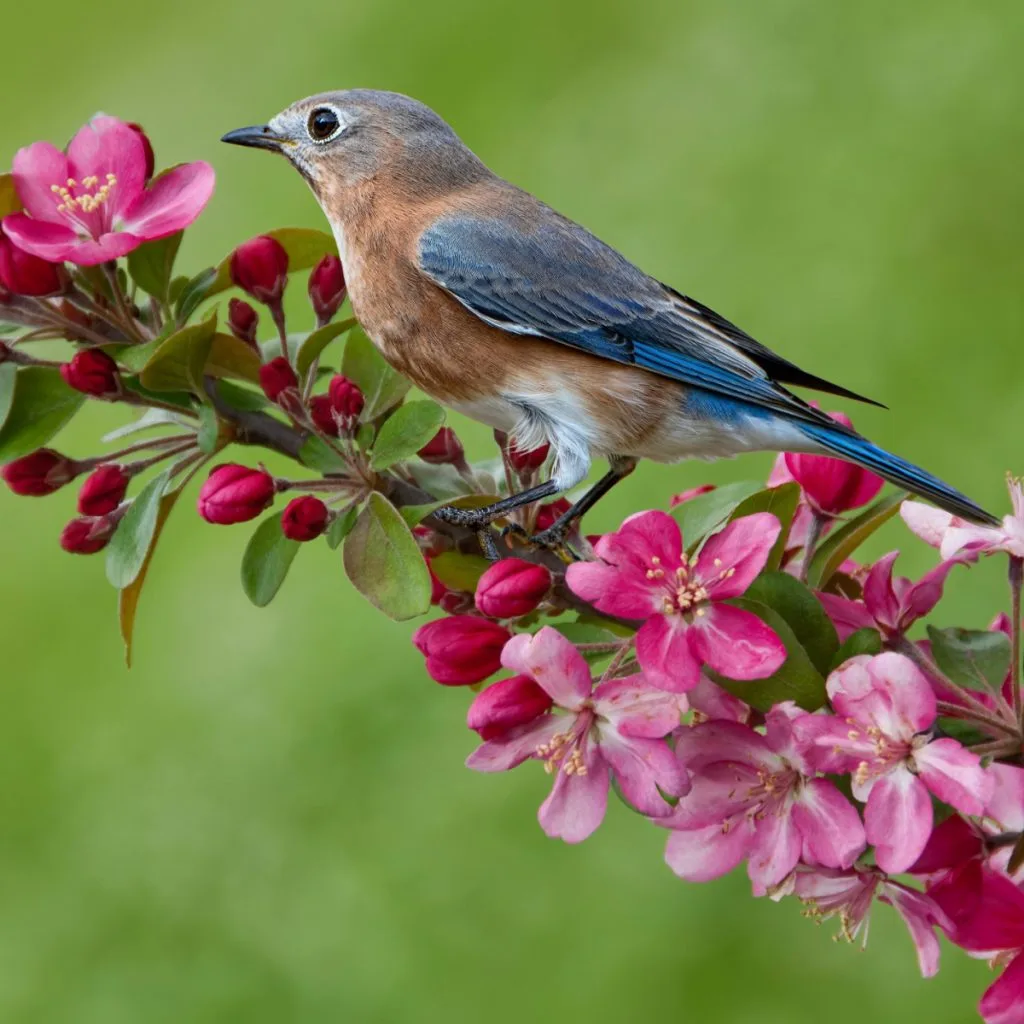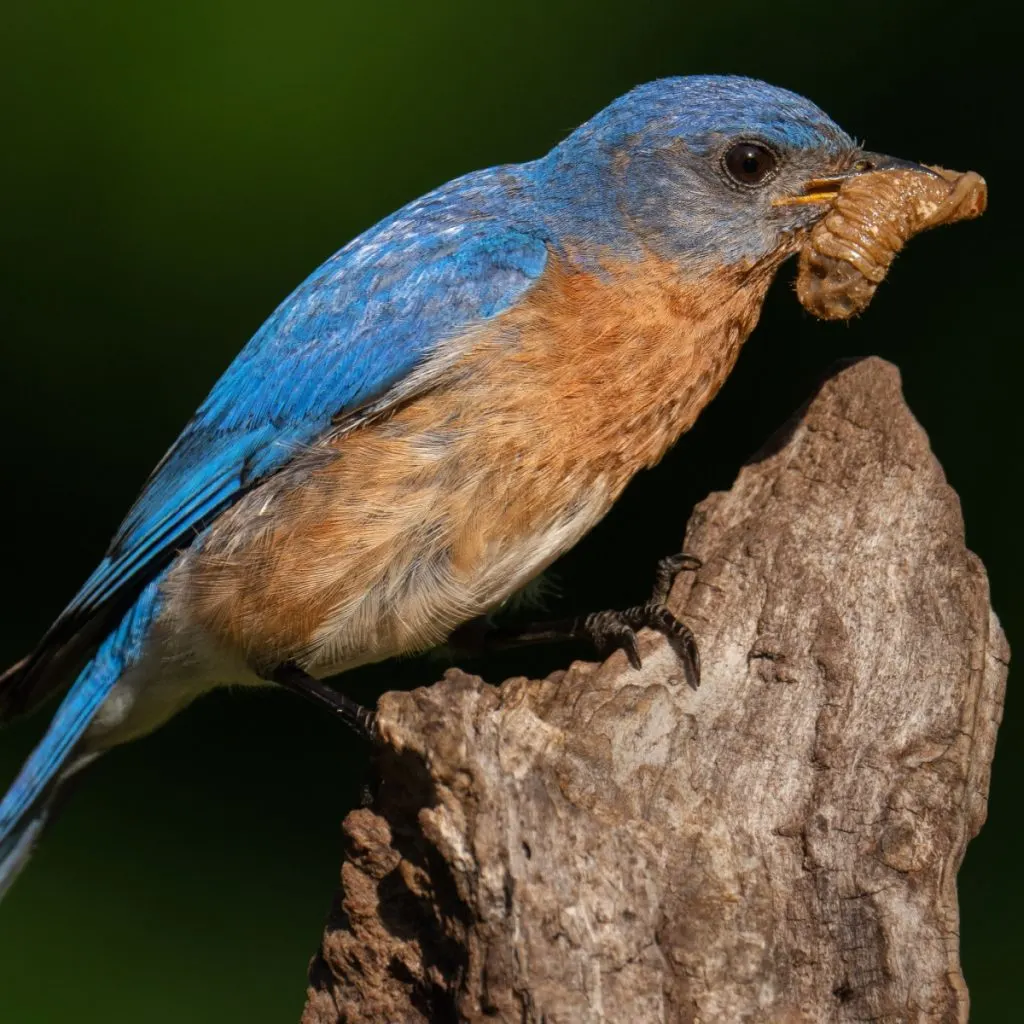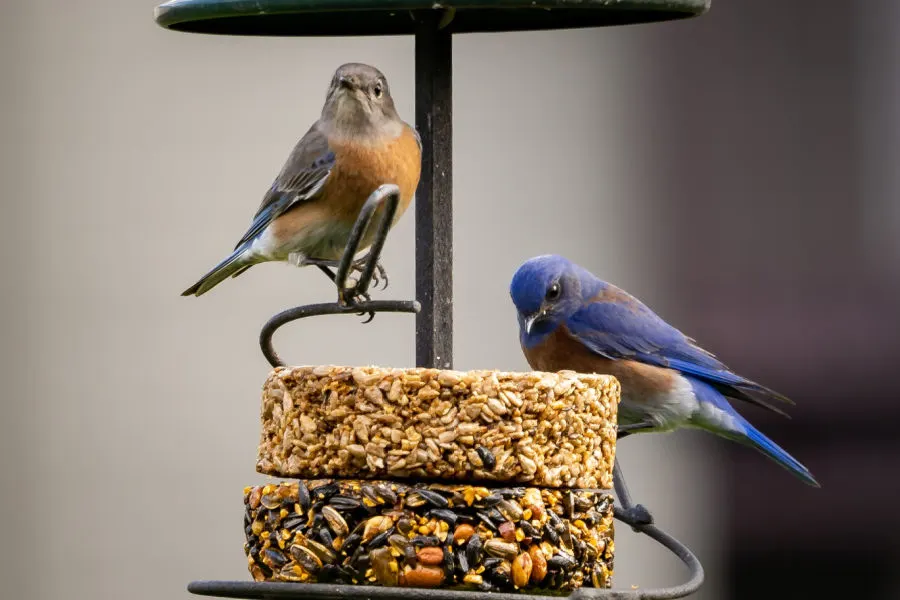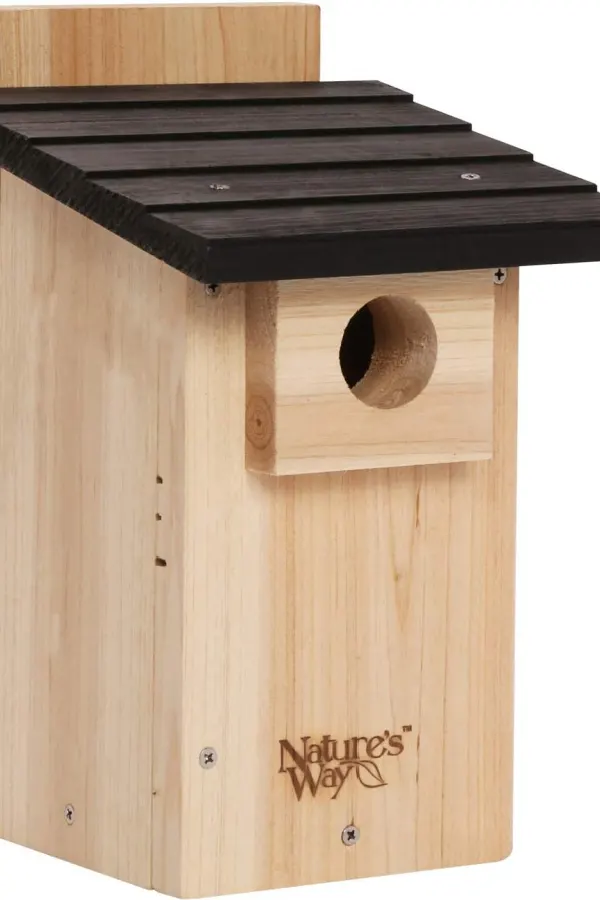Looking for a few simple secrets for attracting more bluebirds to your yard this spring and summer?
Believe it or not, one of the best and easiest ways to keep flowers and vegetable plants safe and healthy is to have bluebirds as a regular visitor to your landscape. Why? Because they are wonderful at keeping the pests that bother those plants completely in check. And not only that – they also happen to be incredibly beautiful to watch doing it!
Bluebirds are among the most beautiful birds to observe in nature. Male bluebirds have a cover of deep blue on both their backs and head, which stands in contrast to the reddish-brown tint on their breast. Females, although less showy, still maintain a gorgeous light blue tint to their tail and wings as well.

Bluebirds have long been admired for their ability to balance the population of insects. It’s for that very reason you often see bluebird houses placed on fence poles all around farmer’s fields to help provide a home for these beautiful birds.
Why? Because if you can get the insect-devouring birds to take up residence nearby, the benefits they bring for your plants only gets better. And it’s exactly why attracting bluebirds to visit and stay in your own yard is just as important too!
The Secrets To Attracting Bluebirds – And Getting Them To Stay!
Although there are several key tips and tricks, the first secret to getting bluebirds to visit and stay is to make sure your landscape provides them with a steady stream of the food they love most. So exactly what foods and insects do bluebirds eat?
The list is lengthy for sure. Although they will eat berries and small fruits on shrubs and trees, they prefer to dine on everything from grubs, mosquitoes, termites and spiders – to crickets, beetles, grasshoppers, ants and more.
Perhaps even more important, bluebirds also enjoy dining on insect larvae. That, of course, can be key in helping to eliminate future generations of would-be pests right from the start.

The good news for gardeners is that by simply planting a vegetable or flower garden, or having a landscape filled with trees, shrubs and perennials, you instantly create an environment that the insects they love to eat most will inhabit.
But in addition to finding an area with a reliable food source – bluebirds also need to find a location where they can nest. For them, that means a safe and secure area. One where females can both safely lay their eggs and raise their young. And if they can have that and food – you all but ensure these wondrous birds will stick around!
With that in mind, here is a look at how to give bluebirds the perfect environment to make them call your home – their home!
Providing Food & Water
When attracting bluebirds, it’s very important early in the season to provide enticing food. Early on, there simply isn’t enough insects or berries available – so by providing bluebirds with food and water at this point, it will be more likely to get them to stick around through summer.
Just as with all birds, bluebirds require water to keep them hydrated and energetic. Without a constant source of water, bluebirds will move on. Small water features or bird baths are wonderful for this purpose.

Not only will bluebirds visit them time and time again, a nearby water source also makes it more likely for them to take up residence in a bluebird house. If you don’t have a water source, locating a small pail of water near their birdhouse can work as well.
As for food in early spring, bluebirds love mealworms. They also happen to be wonderful for their diet and health. You can feed them mealworms in a traditional feeder, or use a bluebird mealworm feed to really get their attention! Affiliate Link: Bluebird Mealworm Feeder.
Bluebirds will also visit traditional bird feeders on a regular basis as well. Especially if you fill them with some of the softer bird feeds ( sunflower hearts, suet cakes, etc.) they enjoy. This can also help with attracting other spring migrators like orioles. See our article: How To Attract Orioles.
Attracting Bluebirds With A Great Home
Although bluebirds will build and live in natural nests created in trees and bushes, they are more than happy to take up residence in a ready made bird house. Especially when it is one that is safe and has been specially designed to fit their needs.
One thing is for sure, bluebird houses do not have to be complex. Bluebirds are cavity dwelling nesters that prefer to build their nest in a more confined space. Simple, salt-box style bird houses with a slanted roof are a tried and true design that work well for both enticing and getting bluebirds to nest.
These types of birdhouses can be found on-line or in stores for purchase – or, you can also quite easily build your own with a few scraps of wood. But whether buying or building your own, there are a few things that go into making a bluebird house good for nesting. Product Affiliate Link: Cedar Bluebird Viewing House
What A Good Bluebird House Has To Offer
To make a suitable home that will attract bluebirds, a bluebird house needs to be able to keep water out, have good ventilation, and be able to drain off any moisture. They also need to be secured high enough in the air to give the birds protection.
Natural wood boxes are best, but if your bird house is painted, keep it in a lighter, reflective color to control heat. Look for birdhouses that have an entrance hole between 1.5 and 2 inches in diameter. This will allow the bluebirds in, but not be so large to allow predators easy entrance.
In addition, the entrance hole should be located at least five inches above the floor. The floor space should measure somewhere between 5 x 5 to 6 x 6 inches. Any more, and it will feel to big for them to nest.
Finally, do not place a perch outside below the hole. This only serves to allow predators an easier way to gain entry into the home. Don’t worry about your bluebirds, they will not use perches and do not need them for entry.

Where To Locate Your Bluebird House
Beyond the construction details of the bird house, where you place it is also a major key to its success in getting bluebirds to use it, and in keeping them safe.
Place your bird house away from tree canopies and trees. Keeping them near trees gives predators easy access to climbing in and killing the birds. Instead, locate the bird house on a post or pole out in an open area.
Keep the bird house at least 6 feet off the ground. This too will help keep predators such as minks, raccoon and possum from trying to get in.
Finally, get your bird house in place early! Putting up your birdhouse in late winter or fall gives birds plenty of advance time to scout out the home. Unfortunately, putting it up in the spring is often too late to have them commit to the new space.
Here is to attracting bluebirds this year to your landscape – and to keeping insects under control naturally! If you are looking to attract even more beautiful and beneficial birds to your landscape, be sure to check out: How To Get Purple Martins To Visit Your Garden – And Eliminate Pests!
This Is My Garden
Follow Our Facebook Page For Great Gardening Tips And Advice! This Is My Garden Facebook Page
This Is My Garden is a garden website created by gardeners, for gardeners. Jim and Mary Competti have been writing gardening, DIY and recipe articles and books and speaking for over 15 years from their 46 acre Ohio farm. They publish three articles every week, 52 weeks a year. Sign up today to follow via email, or follow along!

